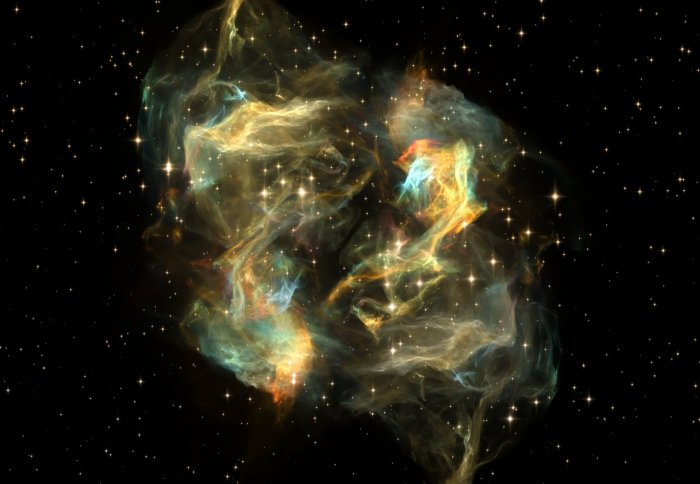08 December 2015
by Hayley Dunning
After studying why the universe did not collapse during its birth, researchers are closer to finding a missing piece in the Standard Model of physics.
Since the discovery of the Higgs particle – responsible for giving mass to all particles – at CERN in 2012, studies of its properties have thrown up a lot of questions. One of these is how the early universe survived. Higgs particles were produced during a phase when the universe was inflating, and theories suggested this should have led to instability and collapse.
Last year, a team of physicists including Imperial’s Professor Arttu Rajantie, discovered that the interaction between Higgs particles and gravity saved the universe from collapse.
Now, by studying the period immediately after inflation, when the universe transitioned to a more steady expansion, the team have been able to pin down the strength of the interaction between Higgs particles and gravity. Their results are published today in the journal Physical Review Letters.
The interaction between the Higgs and gravity forms the last unknown parameter of the Standard Model of particle physics, which scientists use to explain elementary particles and their interactions.
Previous experiments at the Large Hadron Collider (LHC) had estimated the strength of the interaction to have a value between plus and minus one quadrillion (-1015 to 1015). But by studying the transition period after inflation, the team have now narrowed the value significantly, to between 0 and 1.
FROM PARTICLES TO THE COSMOS
There are several theories of inflation that describe the very early universe, when expansion was accelerating very quickly. The new result applies to a wide range of theories, but further studies may also help researchers test which one is correct.
“We have given a much smaller range for the strength of the interaction between Higgs particles and gravity,” said Professor Rajantie. “With future particle experiments and cosmological observations we can now have more of a focus – we know where to look to find the final number. Combining that with other data may reveal which theory of inflation is correct.”
Several upcoming cosmological and particle experiments will provide further insights into the value of the interaction. The LHC has recently re-started at twice the energy as when it discovered the Higgs particle, and several cosmological observation studies will discover more about what happened during the early universe.
These include studies of the cosmic microwave background radiation, a heat signature of the Big Bang, and studies of gravitational waves created by the intense warping of spacetime during the Big Bang. The LISA Pathfinder mission, launched earlier this month, will test the technology required to detect these gravitational waves and their signatures.
-
'Spacetime curvature and Higgs stability after inflation' by M. Herranen, T. Markkanen, S. Nurmi and A. Rajantie is published inPhysical Review Letters.















